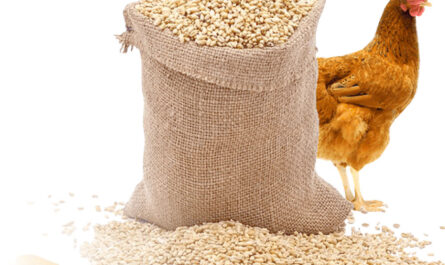Food preservatives are substances used to prevent or retard spoilage of food products by inhibiting the growth of bacteria, yeasts, molds and other microorganisms. They play a critical role in maintaining the integrity, quality and safety of food. Common preservatives used include sorbates, benzoates, nitrites and sulfur dioxide among others. They help extend the shelf life of products without altering their taste and nutritional value. Food preservatives find wide application in bakery & confectionery, packaged food, snacks, meat & seafood and other products.
The food preservatives market is estimated to be valued at US$ 3.04 Bn in 2023 and is expected to exhibit a CAGR of 4.5% over the forecast period 2023 to 2030, as highlighted in a new report published by Coherent Market Insights.
Market Dynamics:
Growing demand for packaged, processed and ready-to-eat food items across the globe due to hectic consumer lifestyles is a key driver for the market. Food preservatives allow food manufacturers to offer products with longer shelf life without refrigeration in smaller package sizes suitable for on-the-go consumption. Also, rising health-consciousness has led to demand for clean label and natural preservatives which is opening new opportunities. Common drivers for their usage include increasing awareness about food wastage and expenditure on food imports in developing nations. However, stringent regulatory norms governing levels of usage pose a challenge for market players.
Segment Analysis
The food preservatives market is segmented into natural and synthetic. The synthetic sub-segment currently dominates the market as it is widely used by food manufacturers owing to its low cost and extended shelf life. Synthetic preservatives such as sodium nitrate and potassium sorbate are commonly used in processed meats and sausages to inhibit bacterial growth and prevent spoilage.
PEST Analysis
- Political: Stringent regulations in various countries regarding the use of certain synthetic preservatives may hamper the growth of this segment. However, exemptions or relaxations for natural preservatives will boost their adoption.
- Economic: The rising disposable incomes and fast-paced urban lifestyles have fueled the demand for processed and convenience food products, which drives the need for preservatives to increase their shelf life.
- Social: Growing health consciousness among consumers is propelling the demand for natural preservatives with no perceived harmful effects. Nonetheless, synthetic variants still have widespread acceptance.
- Technological: Active research on developing novel techniques like controlled/modified atmosphere packaging and non-thermal food processing can provide opportunities to reduce reliance on conventional preservatives.
Key Takeaways
The global food preservatives market is expected to witness high growth, exhibiting CAGR of 4.5% over the forecast period, due to increasing demand for packaged and convenience food products. The market size for 2023 is US$ 3.04 Bn.
Regional analysis: Asia Pacific dominates the global market and is expected to continue its lead due to rising population, growing income levels and shifting diet patterns in major countries like India and China. Rapid urbanization is propelling the grab-and-go trend.
Key players analysis: Key players operating in the food preservatives market are BASF SE, Kerry Group Plc, Kemin Industries, Inc., DuPont Nutrition & Biosciences, ADM, Foodchem International Corporation, Corbion, Celanese Corporation, and Jungbunzlauer Suisse AG. These major players are focusing on new product launches and expansion in high-growth regions.
*Note:
1. Source: Coherent Market Insights, Public sources, Desk research
2. We have leveraged AI tools to mine information and compile it



